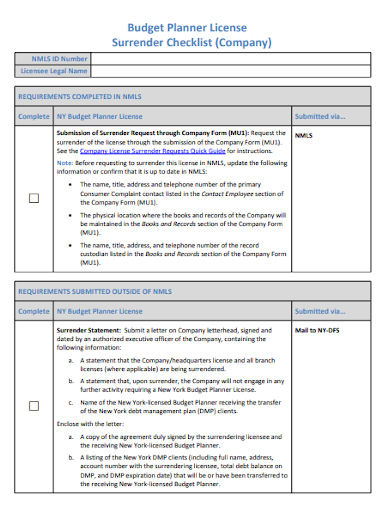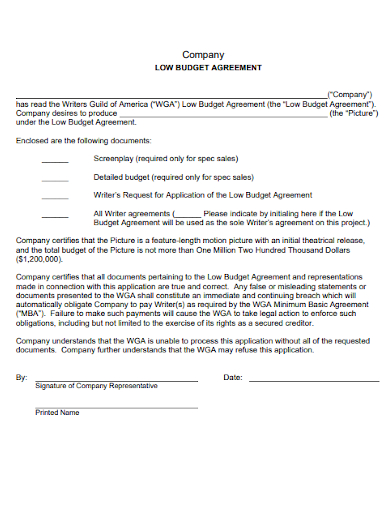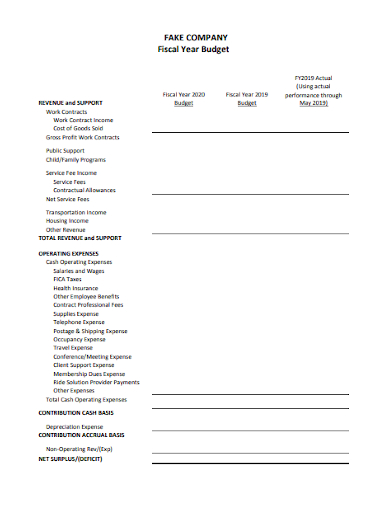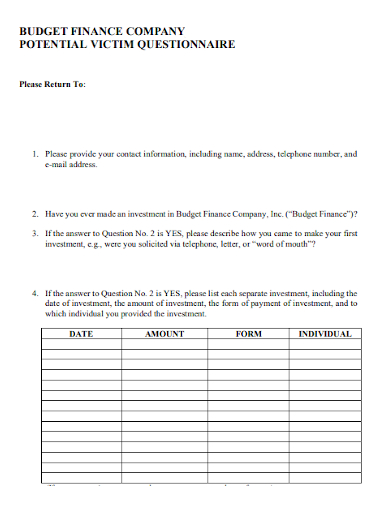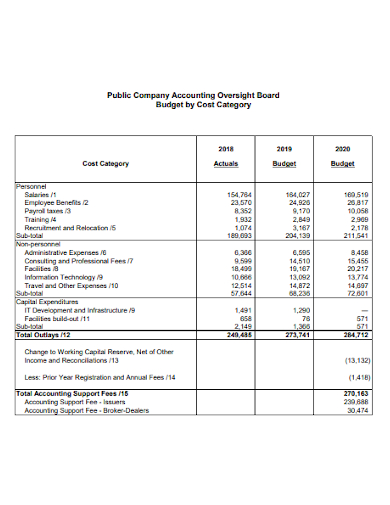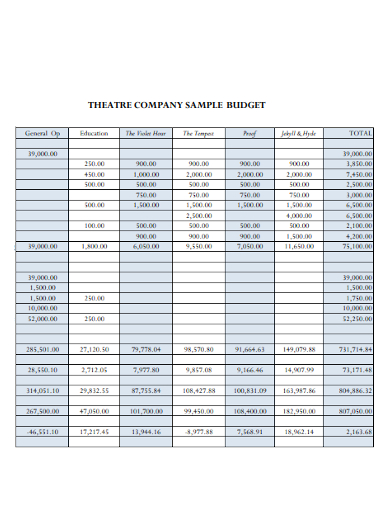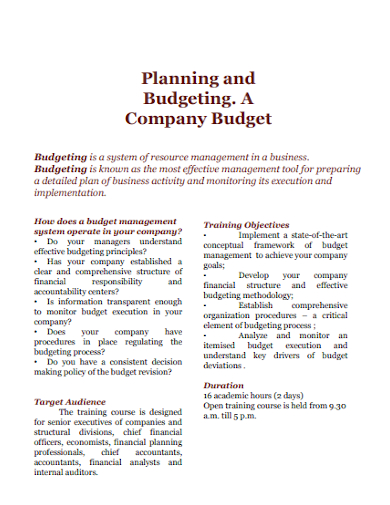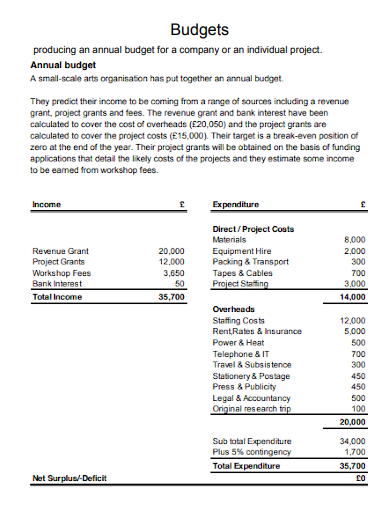Making a budget allows you to see how much money you have, how much money you’ve spent, and how much money you’ll require in the future. A budget can help you make key company decisions like reducing unnecessary spending, hiring more people, or buying new equipment. If you run out of money, the budget can help you adjust your business plan or prioritize your spending on different tasks. You can keep your firm out of debt or find ways to lessen the debt it already has with the correct budgeting plan. A detailed budget can also be utilized to get bank or other financial institution business loans.
10+ Company Budget Samples
A budget is a projection of revenue and expenses for a given period of time. Corporations, governments, and homes all use budgets, and they’re an important component of running a successful business (or family). Companies use budgeting as a plan of action for management as well as a point of comparison at the conclusion of a term. Companies’ planning can be difficult, especially if customers don’t pay on time or if revenue and sales are inconsistent. Companies utilize a variety of budgets, including operating budgets, master budgets, static and flexible budgets, and so on. In this post, we’ll look at how businesses approach budgeting and how they deal with budgeting failures.
1. Company Budget Template
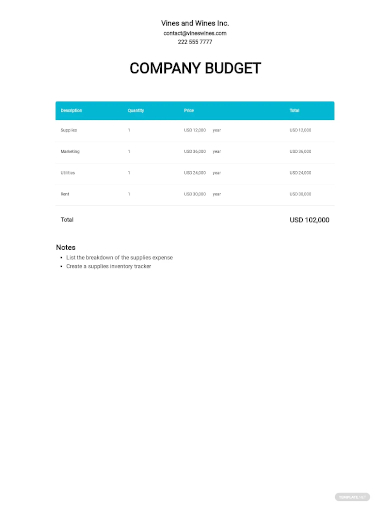
2. Real Estate Company Budget Template
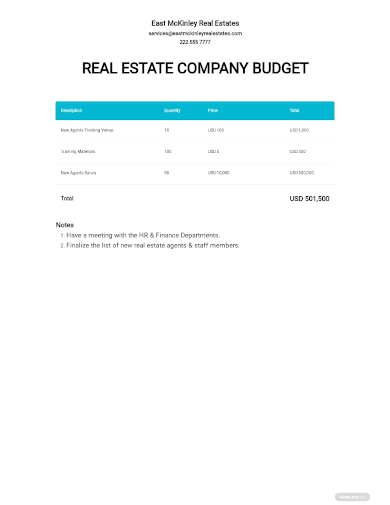
3. Construction Company Budget Template
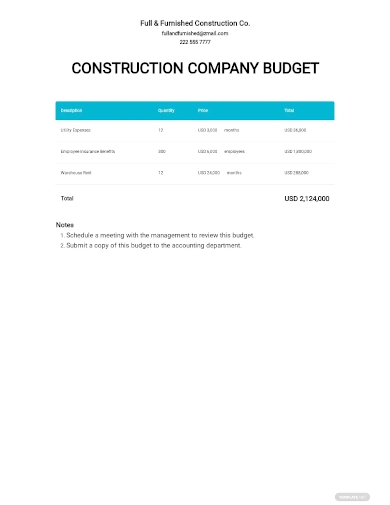
4. Budget Planner License Surrender Checklist Company
5. Company Low Budget Agreement
6. Fake Company Fiscal Year Budget
7. Budget Finance Company Victim Questionnaire
8. Public Company Accounting Oversight Board Budget
9. Theatre Company Sample Budget
10. Planning and Budgeting of Company Budget
11. Company Annual Budget
Types of Budget
- Master budget – A master budget is a compilation of lower-level budgets prepared by various organizational functional divisions. It takes data from financial statements, cash forecasts, and financial plans as inputs. Master budgets are used by management teams to plan the actions required to meet their corporate objectives. Senior management in larger organizations is in charge of producing numerous iterations of the master budget before it is finalized. Funds might be allocated for specific company activities when it has been assessed for the final time.
- Operating budget – An operating budget depicts a company’s predicted revenue and expenses over a set period of time. It’s a lot like a profit and loss statement. Fixed costs, variable costs, capital costs, and non-operating expenses are all included. Despite the fact that this budget is a high-level summary report, each line item is accompanied by pertinent facts. This data is useful for determining whether the company is spending in accordance with its budget.
- Cash budget – A cash flow budget estimates the amount of money that enters and exits a firm over a given period of time. Cash budgets are created by inferring from sales projections and production, as well as predicting payables and receivables. This budget’s information will help you determine whether you have enough liquid cash to operate, whether your money is being used wisely, and whether you are on track to make a profit.
- Financial budget – A cash flow budget calculates the amount of money that enters and exits a company over a specific time period. Sales predictions and production, as well as forecasting payables and receivables, are used to build cash budgets. The data in this budget will help you figure out if you have enough cash to operate, if your money is being spent properly, and if you’re on schedule to generate a profit.
- Labor budget – A labor budget is essential for every company that plans to hire personnel to meet its objectives. It assists you in determining the workforce you’ll need to meet your objectives so you can plan your payroll accordingly. It not only aids in the planning of regular personnel, but it also aids in the allocation of expenses for seasonal workers.
- Static budget – This budget, as the name implies, is a projection of revenue and expenses that will remain constant throughout the year. The budget line items can be utilized as targets to achieve regardless of sales gains or losses. Nonprofits, educational institutions, and government agencies that have been given a set amount to use for their activities in each area normally create static budgets.
FAQs
How budget works?
Although the budgeting process for businesses can be complicated, at its most basic level, a budget compares a company’s revenue against its expenses over a specific time period. Of all, figuring out how much to spend on various expenses and forecasting sales is only one half of the equation. Executives must also consider a variety of other considerations, such as capital expenditure projections, which include substantial acquisitions of fixed assets such as machinery or a new factory. They must also account for continuing financial requirements, revenue gaps, and the overall economic environment. The ability to measure performance using budgets is crucial to a company’s overall financial health, regardless of the type of business.
What is an estimated revenue?
This is the amount of money you anticipate your company making from the sale of goods and services. Sales prediction and projected cost of products sold or services rendered are the two key components of estimated revenue. If your company is more than a year old, you can use your previous experience to estimate these components. If your company is brand new, you can look up the revenue of similar area businesses and utilize that information to generate some conservative revenue estimates. However, whether your company is new or established, it is critical to remain realistic in order to prevent overestimating.
Check out some of the company budget samples and templates supplied in the article for your reference if you want to view more samples and formats.
Related Posts
FREE 10+ Expense Budget Samples in MS Word | Google Docs | Google Sheets | MS Excel | PDF
FREE 4+ Vacation Budget Planner Samples in PDF
FREE 10+ Budget Outline Samples in PDF | MS Word
FREE 10+ Conference Budget Samples in MS Word | MS Excel | Google Docs | Google Sheets | Apple Pages | PDF
FREE 10+ Monthly Budget Worksheet Samples in PDF | MS Word | Google Docs | Google Sheets | Excel
FREE 10+ Monthly Project Budget Samples in MS Word | MS Excel | Google Docs | Google Sheets | PDF
FREE 10+ Corporate Budget Samples in MS Word | MS Excel | Google Docs | Google Sheets | PDF
FREE 9+ Primary School Budget Samples in MS Word | Google Docs | Google Sheets | MS Excel | PDF
FREE 10+ Operational Budget Samples in PDF | DOC
FREE 5+ Budget Layout Samples in PDF
FREE 6+ Paycheck Budget Samples in PDF | MS Word
FREE 10+ Architecture Budget Samples in PDF
FREE 10+ Capital Budget Samples in PDF | MS Word | Google Docs | Google Sheets | Excel | Apple Numbers | Apple Pages
FREE 10+ Budget Tracker Samples in PDF | DOC
FREE 4+ Corporate Monthly Budget Samples in MS Word | Google Docs | Google Sheets | Excel

